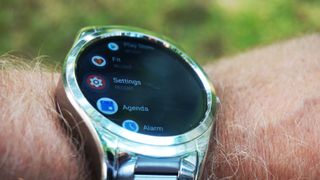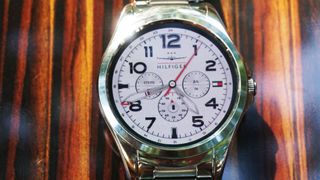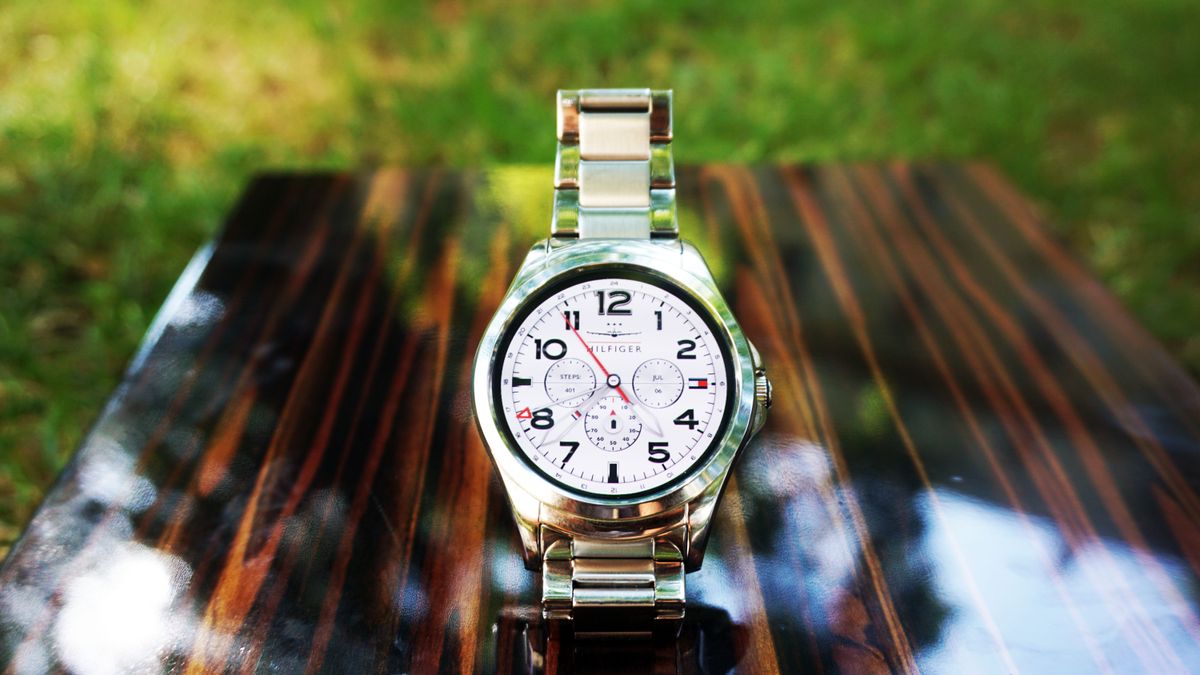Why you can trust TechRadar
Specs and performance
It will be of no surprise to those who have kept their ear to the wearable ground that the Tommy Hilfiger TH24/7 You comes with a a Snapdragon Wear 2100 chipset. This is the chip that is in the majority of watches of this type and offers enough grunt to get the watch through the majority of tasks, without any dreaded stutter.
Saying that, this is a chip that’s starting to show its age - it’s been around for two years now. So we would have preferred something more of an upgrade.
None of the mid-range manufacturers seem to be jumping to a rival such as Intel Atom, so we are stuck in a bit of a holding pattern for now. We didn’t spot any noticeable performance problems that detracted from our enjoyment of the watch, however.
This is probably more to do with Google making sure that Wear OS works well with a chip that’s the mainstay for most wearables in the market at the moment, than anything fancy HP has done behind the scenes.

There is only one button on the Tommy Hilfiger TH24/7 You and that is situated in the fake crown. Press it once when you are on a screen that isn’t the main interface and it brings up a cascade of apps, services and Google Play - so you can customize your Wear OS experience as you wish - a longer press summons Google Assistant.
The rest of that navigation is done via the screen. While this leaves inevitable fingerprints, it’s a fairly smooth ride. Swipe left and it will offer up the ability to change the screen from something Tommy Hilfiger branded to screens that are a little bit more subtle. There’s also a cog that you can press to choose the Complications. These are the bits of additional information you want to see on the screen - step count, notifications etc.
Swipe up and you get the current app you are using, continue to swipe up and it will go through other notifications, such as emails and texts received, until you get to a screen where you can clear up the notifications.

A downward swipe get you to a notification panel for settings, turning the screen off, screen brightness and putting the watch in flight mode. It’s here you can see how much battery is left as well.
As a conduit to your phone, the Tommy Hilfiger TH24/7 You is a great device but try and do anything more and the cracks start to appear. There’s no NFC for a start, so that rules out mobile payments. The smartwatch doesn’t have LTE or GPS, either, so that rules out using it as a true standalone running watch. The step counter is good, though, but we found ourselves leaving this smartwatch in our gym bag, rather than keeping it on during a workout.
When it was on, there’s no heart rate monitor either to help us make sure we are training effectively.
Battery life
Tommy Hilfiger TH24/7 You is also disappointing when it comes to battery life but it's nothing we haven’t come across before. If we didn’t charge it nightly then it was by sheer good luck that the thing was still charged for us by the end of our commute the next day. It was made even worse when we turned the screen to ‘always on’ (again, this was to be expected though).
We have definitely seen better batteries on a smartwatch and it is an area that lets the rest of the watch down. Yes, we are well versed in charging our phones everyday but there is something about a smartwatch that makes you pine for more juice.
The Tommy Hilfiger TH24/7 You doesn’t have any warning mechanism (well, not one that's automatically turned on) either to let you know it is in need of a charge.
There’s nothing worse than finding out your smartwatch is dead when all you want to know is the time. It’s like putting your hand into a bag of sweets and finding out you have already eaten the last one.
Current page: Specs, performance and battery life
Prev Page Introduction, price, design and display Next Page Verdict and competitionMarc Chacksfield is the Editor In Chief, Shortlist.com at DC Thomson. He started out life as a movie writer for numerous (now defunct) magazines and soon found himself online - editing a gaggle of gadget sites, including TechRadar, Digital Camera World and Tom's Guide UK. At Shortlist you'll find him mostly writing about movies and tech, so no change there then.

Testing Samsung's new AI-powered vacuum taught me that I don't really need my vac to be know the difference between every single surface

I’ve used a lot of power banks, but the Baseus Blade Pro is the only one slim enough for my laptop sleeve

This is the world's first Thunderbolt 5 LTO tape drive and I can't understand why it exists in the first place









